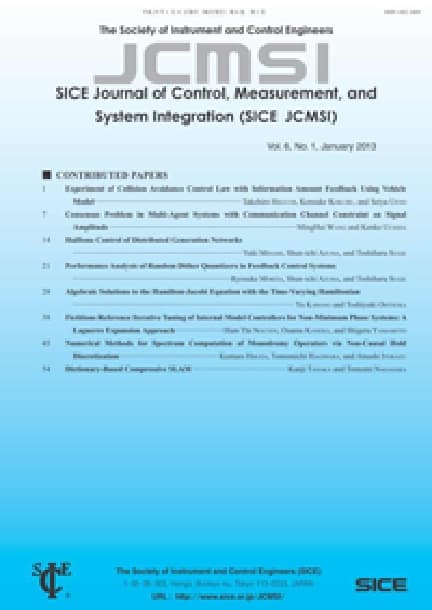Optimal Path Construction Incorporating a Biarc Interpolation and Smooth Path Following for Automobiles
Shunsaku ARITA, Pongsathorn RAKSINCHAROENSAK
pp. 23-29
DOI:
10.9746/jcmsi.13.23Abstract
In this paper, path construction and path following methods are proposed. The path construction method addresses the problem to generate a path satisfying boundary conditions which are assigned points and tangent directions at the endpoints of the path. This problem is so-called G1 Hermite interpolation, and it has been widely researched, for example, in the area of computer-aided design. The proposed path construction method utilizes one of them, namely the biarc interpolation, as an initial guess for obtaining an optimal path. Trials in some initial conditions show that the proposed method can generate a smooth path with a low computational cost. Meanwhile, the path following method assumes that a linear bicycle model follows a reference path by using the set-point regulator. The proposed method smooths the curvature profile of the reference path to be suited for the path following. Simulation results show that the proposed path construction and following methods achieve smoother tracking than the case without optimal path and smoothing.









